Guest post by Dr. Barbara O’Neill, CFP®, AFC®
Dr. Barbara O’Neill, CFP®, AFC® is the owner/CEO of Money Talk: Financial Planning Seminars and Publications where she writes, speaks, and reviews content about personal finance. She is a Distinguished Professor Emeritus at Rutgers University and sister of Roadcraft USA creator Michael O’Neill. She is also the author of the book Flipping a Switch: Your Guide to Happiness and Financial Security in Later Life. Learn more about Barbara’s work at moneytalkbmo.com and follow her on Twitter at @moneytalk1.
My brother Michael started Roadcraft USA to share his passion for beautiful scenery and fun and interesting road trips, especially the two-wheeled kind. What do I know about motorcycles and professional photography? Absolutely nothing. Nada. Zilch. Basically, no “street cred,” whatsoever. My “wheelhouse” is personal finance.
I also recently wrote a book called Flipping a Switch. It encourages so-called “ants” (people who have been frugal spenders and super savers, often for decades) to “flip a switch” (i.e., transition) from saving to spending mode and start using their hard-earned money for enjoyable pursuits, especially in later life.
Travel is on many “bucket lists” but, psychologically, it can be difficult to withdraw money from savings instead of adding to it. However, if people don’t spend their savings, someone else eventually will! The IRS also requires required minimum distribution (RMD) withdrawals from tax-deferred plans once people turn 72.
This post describes two types of road trip spending: the frugal kind and the lavish kind. With an annual inflation rate of 8.5% in March 2022 and food and gas prices both a strong driver of rising prices, I’ll share useful hacks to save money gleaned from my four decades+ as a financial educator…and an “ant.”
For those who have enough money saved to weather the inflation “storm,” I’ll also share some tips to “level up” your next road trip, whether your vehicle of choice has two wheels, or three, or four.
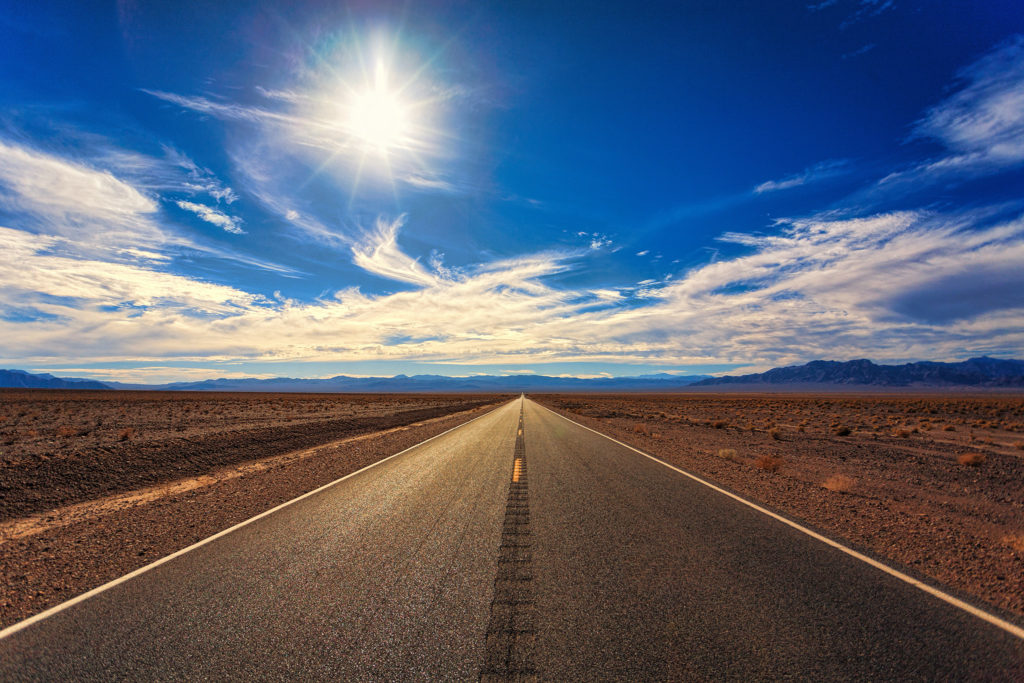
Ready For a Road Trip?
No matter what your travel style, start planning your road trip by setting some goals:
- Do you want a structured itinerary or to go “where the road takes you”?
- What would you like to do or see (e.g., beaches, wineries, national parks, sporting events)?
- Are there people you want to visit along the way?
- Are there new foods and restaurants you want to try?
Next, create a financial framework by answering the following questions:
- What is the total amount of money needed to fund your trip?
- Do you need to save the money or is it already in the bank?
- What are anticipated expenses for different aspects of the road trip (e.g., food, gas, and lodging)?
- Do you have money set aside for unanticipated expenses (e.g., vehicle repairs and price increases)?
Frugal Travel Hacks
Everyone wants to get as much value as possible for their travel budget and not overpay for goods and services. The following ideas are like a menu in a New Jersey diner. There are a lot of options to select from so pick those that best fit your personality, lifestyle, and mode of travel (e.g., motorcycle or car).
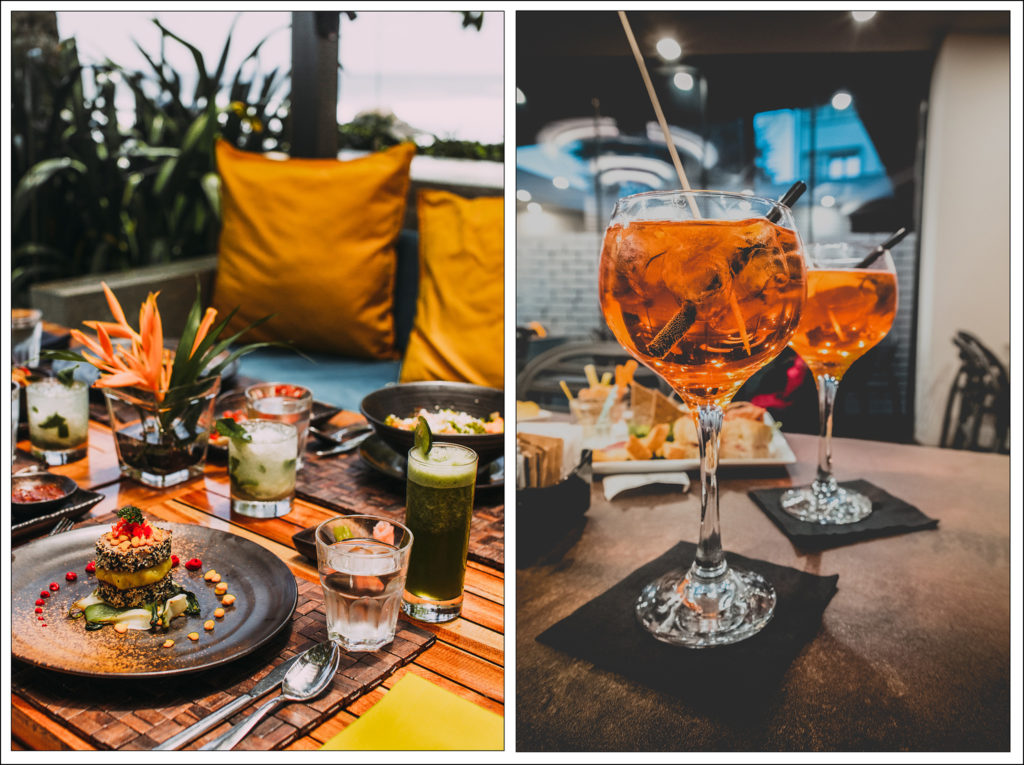
Food and Beverages
Eat Out Sparingly- Try to eat only one meal a day at a restaurant, if possible. Pack foods such as granola bars, dried fruits, peanut butter, muffins, and canned juices for breakfast, or select hotels that include a free continental breakfast. Many hotels offer perks (e.g., free breakfast and swimming pools) to attract visitors.
Keep Food Cool- Pack food in a cooler (or buy it when you arrive at a destination) and stay at hotels with a refrigerator and/or microwave oven in the room. This lets you save leftover food from a restaurant or order take-out food rather than a sit-down meal. Pack some re-sealable food storage bags or plastic containers.
Rethink Restaurant Drinks- Consider sticking with complimentary water at restaurants because beverages add to the cost of eating out. If someone skips 208 glasses of soda (four a week) at $3 each- or 104 beers or glasses of wine (2 a week) at $6 each- that’s $624 in annual savings.
Bring Your Own Beverages- Space permitting, bring your own beverages on a road trip. Examples: bottled water, soda, and low-cost wines available at Trader Joe’s and Aldi supermarkets. Another way to spend less on wine and soft drinks is to “stretch” them with a large cup of ice so they last longer and you can buy less.
Split an Order- Consider sharing an entrée- but check first to see if there is an additional “plate charge” for shared meals. Appetizers and desserts are also great for sharing. Instead of individual desserts at a restaurant, buy a dessert item (e.g., cake or pie) at a supermarket to enjoy afterward.
Eat Out for Lunch- When you eat out, consider going to restaurants at lunchtime, rather than dinner, because the cost is generally less. You might also consider combining lunch and dinner into one meal by having a late afternoon “linner.” Lunch menu meals- and lower prices- are generally in effect until around 3 pm.

Lodging
Join a Group- Travel with a group of people such as family members, friends, or members of a motorcycle club. Some people save money by sharing vacation expenses (especially lodging and food) with others. An example is renting a multi-room condo, beach house, or cottage and sharing rent and food costs.
Find Coupons- In some high-traffic areas (e.g., busy interstate highways and state tourism welcome centers), tourist guidebooks are chock full of coupons to save money on hotels and food. Check the “fine print,” however, for exclusions such as weekends and holidays and whether an advance deposit is needed.
Search Online for Deals- Look for deals on hotel room rates through booking websites (e.g., Kayak, Expedia, and Priceline) and compare them to rates available on hotel websites. Again, check the terms and conditions of each pricing arrangement (e.g., advance deposits and refunds).
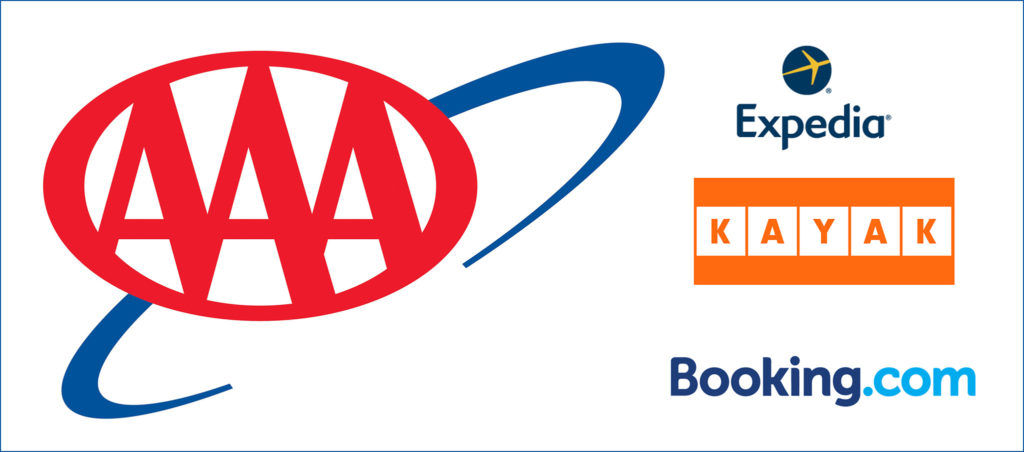
Travel Off-Peak- Take your road trip during times when crowds are smaller and prices for lodging of any type (e.g., hotels, campgrounds, RV parks) are likely to be lower. Consider traveling during the less expensive “shoulder season” right before and after high-cost peak season dates.
Join Rewards Programs- Sign up for hotel rewards programs and accumulate points. Concentrate on a few hotel chains so points grow faster. When you have earned enough points for a free stay (this will vary by hotel brand, location, and time of year), cash in your points for free hotel nights.
Stay Local– If money is tight, be a “local tourist.” Visit local historical sites or parks and learn more about where you live. Plan “daycations” (inexpensive one-day trips) and “staycations” (experiences at or near home) in lieu of travel to distant areas. Focus on doing fun things together as a family or group of friends.
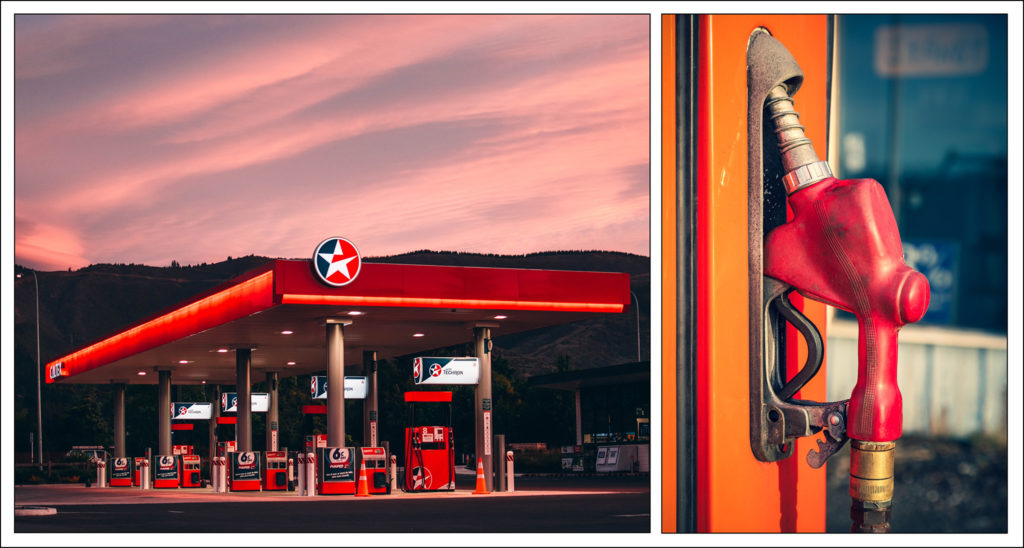
Gas
Travel Efficiently- The easiest way to save money on gas is to drive less. This is true whether commuting to work or taking a road trip. With this is mind, plan your road trip using one of many available trip planning apps that calculate the time and distance between places and build a travel map.
Find Cheap Gas- Gas prices vary from state to state and even within the same town! Gas stations close to major highways often charge more than others…because they can. Use a gas app like GasBuddy and Waze to find the cheapest source of gas where you need it.
Pay With Cash- Many gas stations charge less per gallon for cash purchases (vs. credit cards) because they avoid credit card processing (a.k.a., interchange) fees. Paying with cash also avoid the risk of having a credit card skimmer placed on a gas pump to steal personal data.
Join a Fuel Rewards Program- Sign up for a fuel rewards program at a supermarket or warehouse club and accumulate points to earn free or reduced price gas. When you have earned enough points for a reward, cash in your points to save money.
Time Your Fill-Ups- Travel experts recommend filling up early in the work week (i.e., Sunday and Monday) or at the end (i.e., Friday) and to avoid the middle of the week, especially Thursdays. Of course, on a road trip, when you need gas, you need gas. This is when gas apps come in handy.
Check Tire Pressure- All the travel experts agree that underinflated tires decrease gas mileage. Many gas stations have inexpensive “do it yourself” machines where users can check their tire air pressure and inflate tires that need air.
Other Travel Expenses
Look for Deals- Seek out discounts at resorts, theme parks, plays, museums, etc. Entertainment providers often offer “deals” to attract customers. Check in with a hotel concierge or look for a rack of brochures in hotel lobbies. State tourism departments also have free vacation guidebooks with money-saving coupons.
Find Free Services- Take advantage of free or low-cost public services along your road trip route. Examples include outdoor concerts, pools, parks, and summer recreation programs.
Don’t Forget Your Pet- Make friends with “pet-friendly” neighbors. Trading pet-sitting services will eliminate the cost of kenneling a pet from your travel budget.
Shop Around- Compare prices from at least three competing product and service providers each time you take a road trip. Just because one company had the best deals once, doesn’t mean that they always will.
Become a Member- Take advantage of travel discounts and resources (e.g., Tour Books) available to AAA and AARP members. Local motorcycle clubs that travel together as a group may also be able to negotiate discounts.
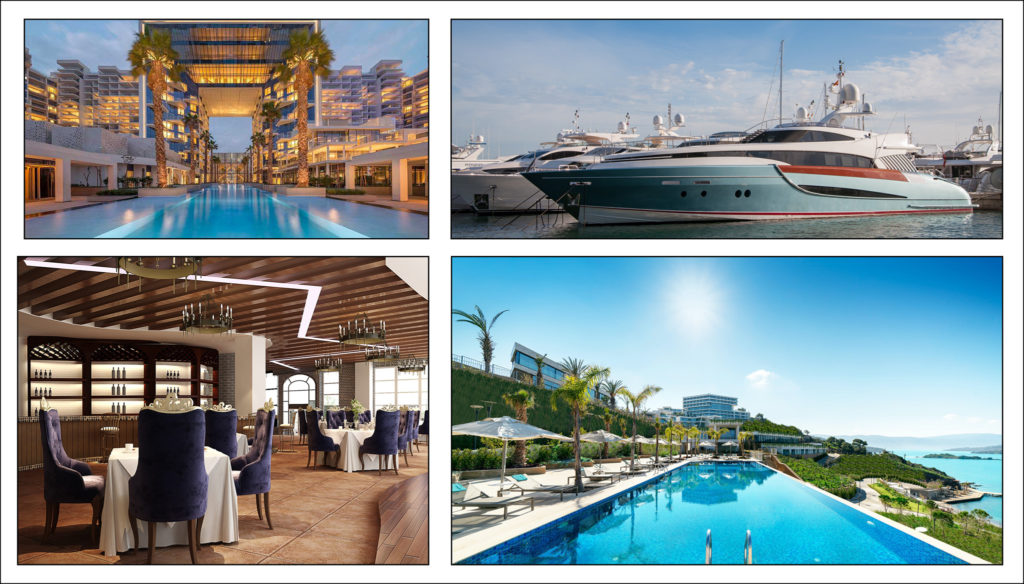
Lavish Travel Tips
Chances are, if you have the resources for a more lavish road trip, you are an “ant.” Certainly, keep all of the frugal travel hacks, above, in mind, but also consider the following suggestions to create a memorable road trip:
Step Outside Your Comfort Zone
“Ants” can mitigate the effects of decades of ingrained spending and saving habits, but it will take some work. To ramp up to a lavish road trip, practice spending on higher priced items. Examples include orchestra seats at a play (vs. mezzanine), business class on a plane or train, and fancier restaurants than you are accustomed to.
Answer Some Hard Questions
As I wrote in Flipping A Switch, why are you amassing a large cash stash if you do not plan to spend it down or gift it? How are you planning to spend this money? Will your health get better with age? If you don’t spend your savings, who will? Will others respect the hard work and frugality that resulted in your nest egg?
Get Help from Advisors
Two great advisors for a lavish road trip are a travel agent to show you all the travel options that are available and a certified financial planner® who can “run the numbers” to assure you that it is okay to “loosen up” and spend some of your savings without running out of money.
Find Lavish Lodging
Consider hotels that you would have always thought were “beyond your reach” in a more frugal past. If you’re riding on country roads, examples include The Greenbrier in West Virginia, Mohonk Mountain House in upstate New York, Nemacolin Woodlands in Pennsylvania, and Big Sky Resort in Montana. If your road trip takes you to cities, examples include The Brown Palace in Denver, The Driskill in Austin, Brown Hotel in Louisville, Hotel Alex Johnson in Rapid City, and Willard Intercontinental in Washington, DC.
Create a Travel Budget
Frugal budget or lavish, all road trippers need a budget that projects their planned expenses. This is especially important for “ants” who are unaccustomed to higher-end expenses. A budget can increase travelers’ sense of control over their finances.
Road Trip Resources
Before starting a road trip, consider laying out some cash for the following essentials: bug spray, cooler, disinfecting wipes and hand sanitizer, emergency roadside/first aid kit, flashlight, garbage bags, hat/helmet, lip balm, reusable water bottle, portable power bank, snacks, spare tire, a jack, and other tire changing tools, (for cars), sunglasses, sunscreen lotion, water, wifi hotspot, and an umbrella.
Also be sure to bring the following: AAA (or other roadside assistance program) card, cell phone/USB charger, driver’s license, ID card or passport for identification, map(s), plastic containers/baggies for snacks and leftovers, toiletries/toothbrush, travel clothes, vehicle manual, and vehicle registration and insurance card.
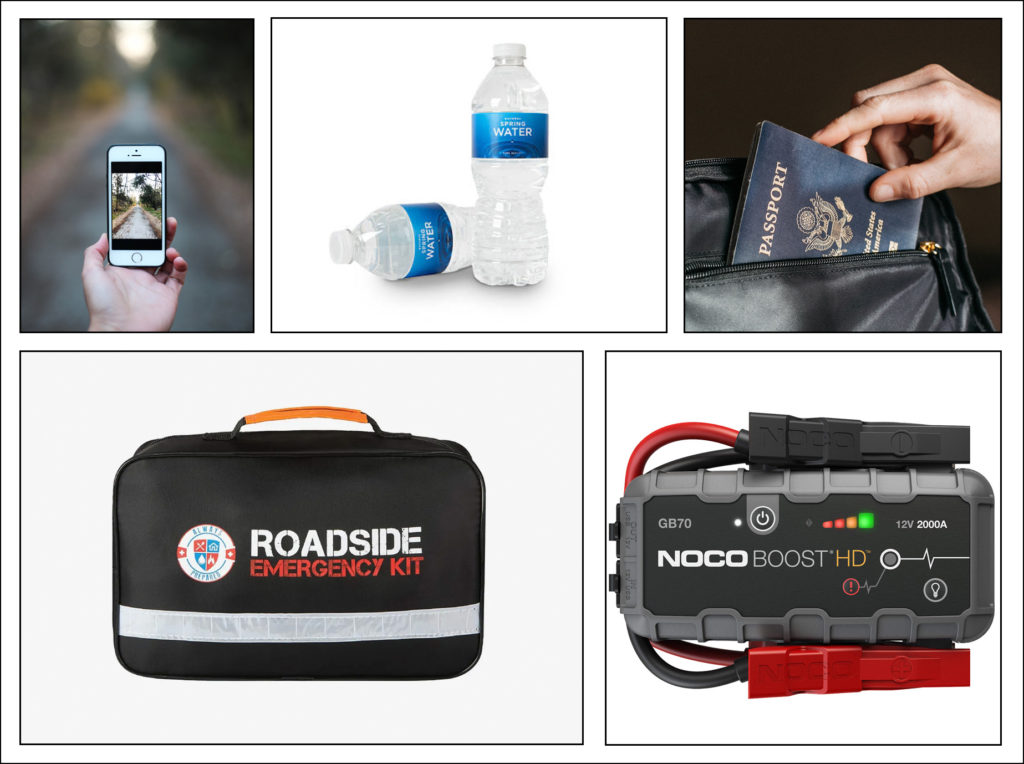
Three (More) Things
- Pack Shrewdly- Bring only what you need. You will have less “stuff” to manage on the road and will get better gas mileage if your vehicle is not weighed down with unnecessary items.
- Inspect Your Ride- Get your vehicle in tip-top shape before a road trip with a tire inspection/rotation, oil change, and other recommended maintenance tasks.
- Be Flexible- Adjust your road trip to conditions that pop up along the way. Plans may need to change due to weather conditions, traffic accidents, and other factors that can’t be planned for in advance.
Six Smart Strategies
No. 1: Tweak Your Financial Framework
A list of anticipated road trip expenses is a guide- not a straitjacket. If a traveler saves money in one spending category (e.g., food), it is available to spend somewhere else (e.g., entertainment)
No. 2: Eat Healthy
Some people “go off the rails” when they are on a road trip. They skip a daily exercise regimen and eat unhealthy foods. With a little planning, healthy habits are still possible.
No. 3: Use-But Verify- a GPS
Whether it’s a free-standing device, a cell phone app, or built into the dashboard of a vehicle, a GPS is a useful tool. It is not infallible, though. Remote areas may not be mapped out or data entry errors can cause problems.
No. 4: Pack Some Playlists
Road trips are more enjoyable with music. Whether it’s a motorcycle Bluetooth helmet or stereo system or tunes saved on a flash drive to play in a car, plan some entertainment in advance.
No. 5: Line Up Resources
Identify ways to access emergency cash and contact trusted loved ones in the event of an emergency. Keep an emergency contact card in your wallet and/or vehicle.
No. 6: Avoid Unnecessary Risks
Think twice about engaging in risky behaviors. An example is riding alone at night or early morning in the dark in an unfamiliar area. Stop for a good night’s sleep and start fresh the following morning.
In Summary
No matter how large or small your travel budget, or whether you are planning a daycation, a cross-country road trip, or something in between, you can have a great time. With a little advance planning (e.g., road trip goals and a financial framework) and inspiration from stories and photos on the Roadcraft USA blog, you’re all set.
Best wishes for a fantastic road trip!
This post provides general personal finance information and does not address all the variables that apply to an individual’s unique situation. It should not be construed as legal or financial advice. If professional assistance is required, the services of a competent professional should be sought.
Click Here to view an interactive visual index page where you can quickly browse through all of the great features that are published on the Roadcraft USA blog.

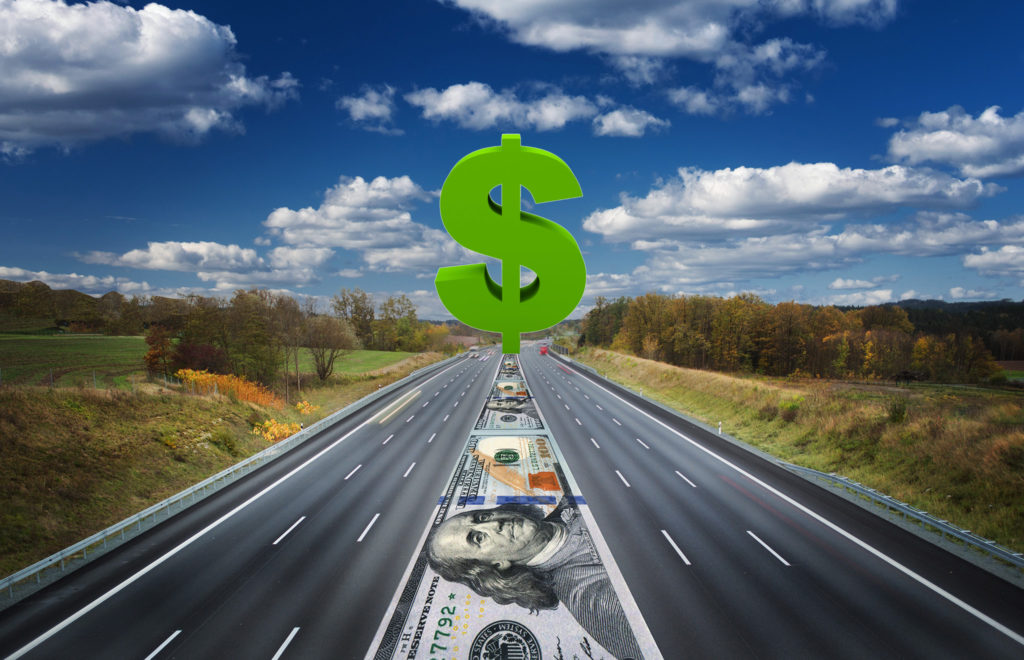
We have a new fuel treatment product out that is worth a look. 10-20% improved mpg!? Interested? Just ask.
Pingback: Frugal Spending Tips for Your Next Road Trip | Centsai
Pingback: northeast coast motorcycle travel - Roadcraft USA
Pingback: Arizona desert adventure motorcycling - Roadcraft USA